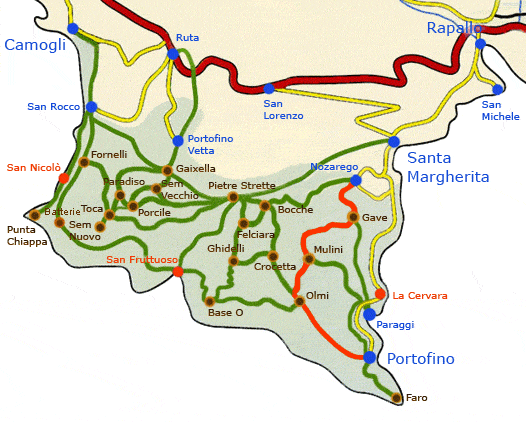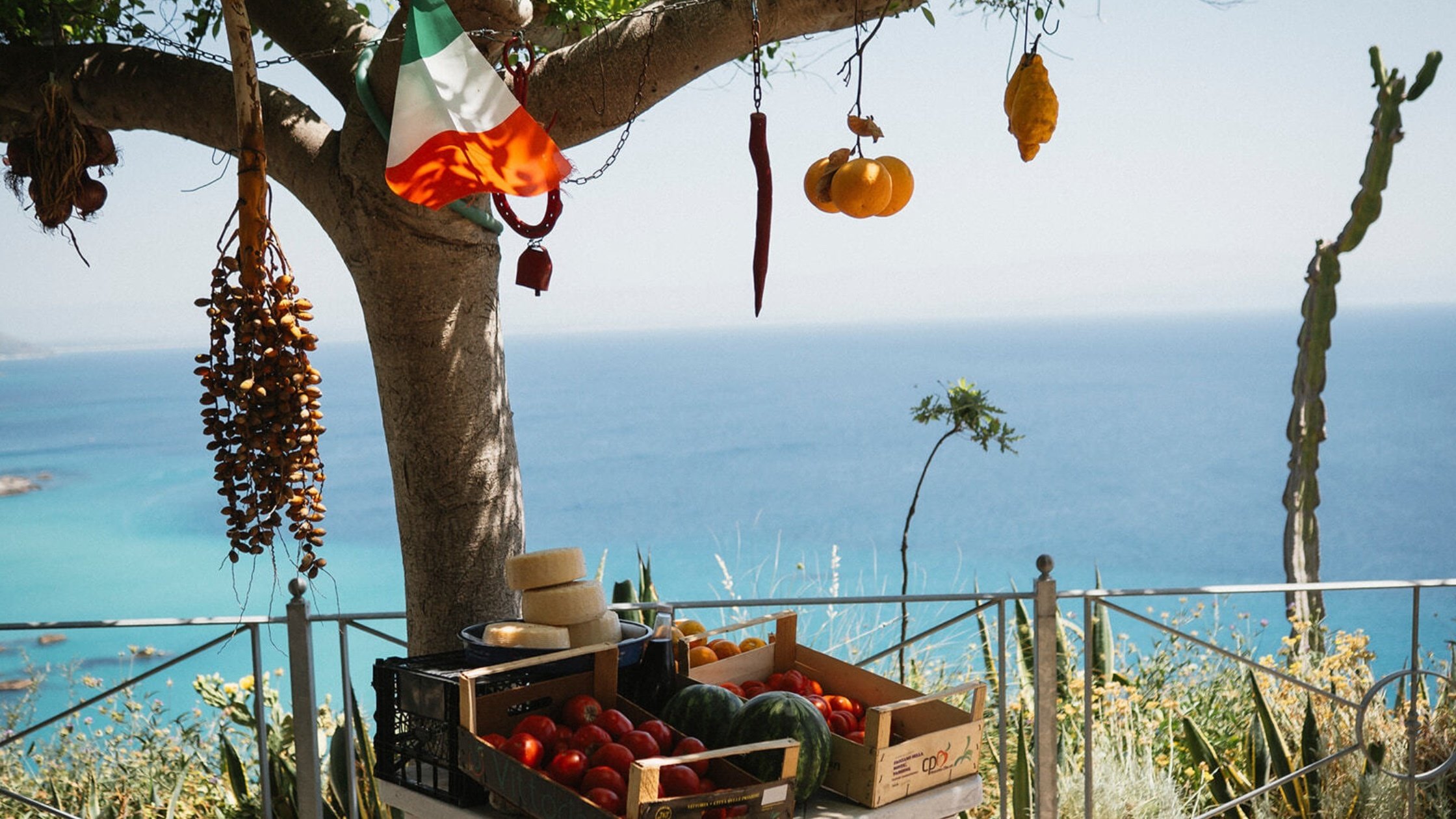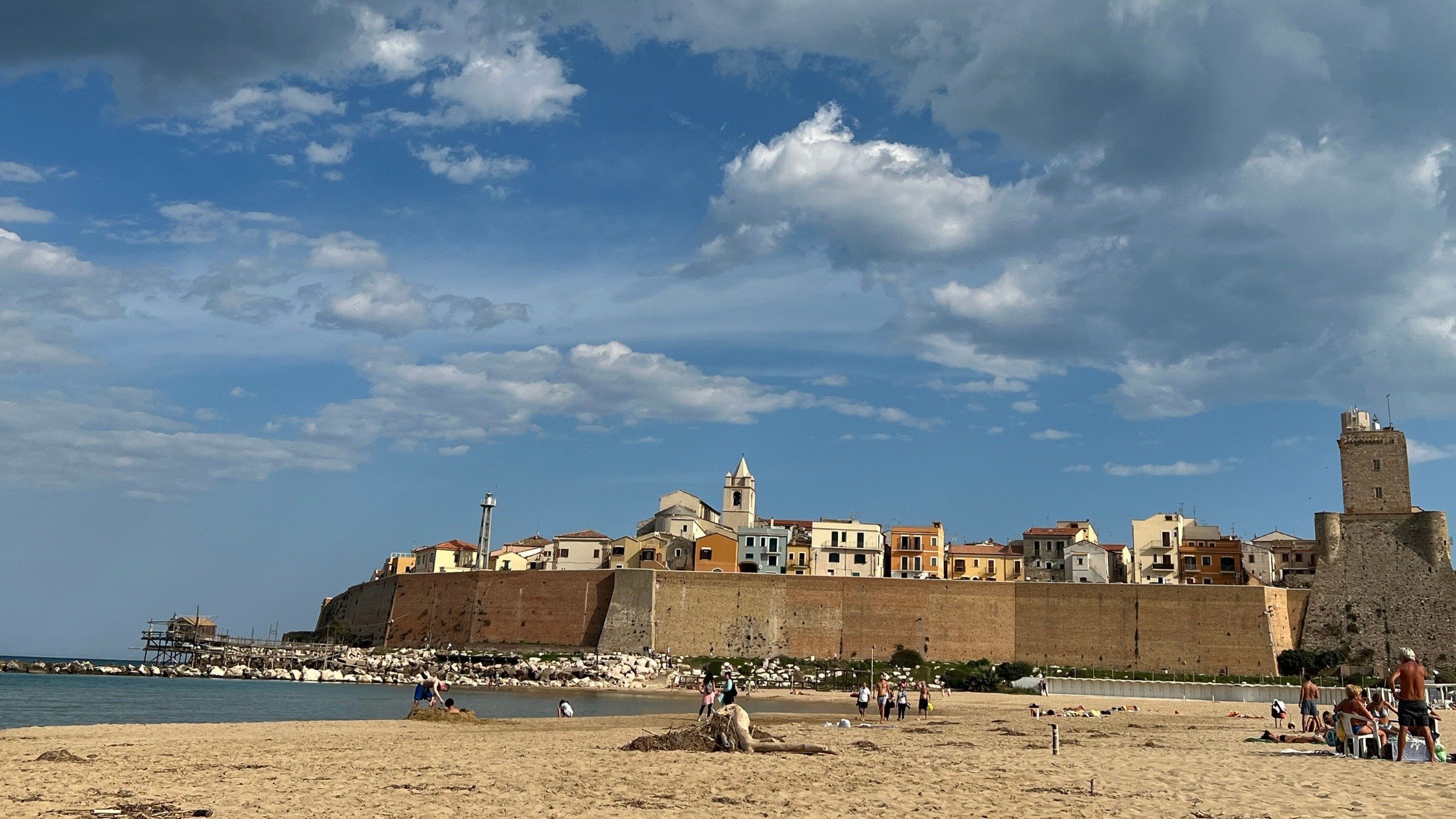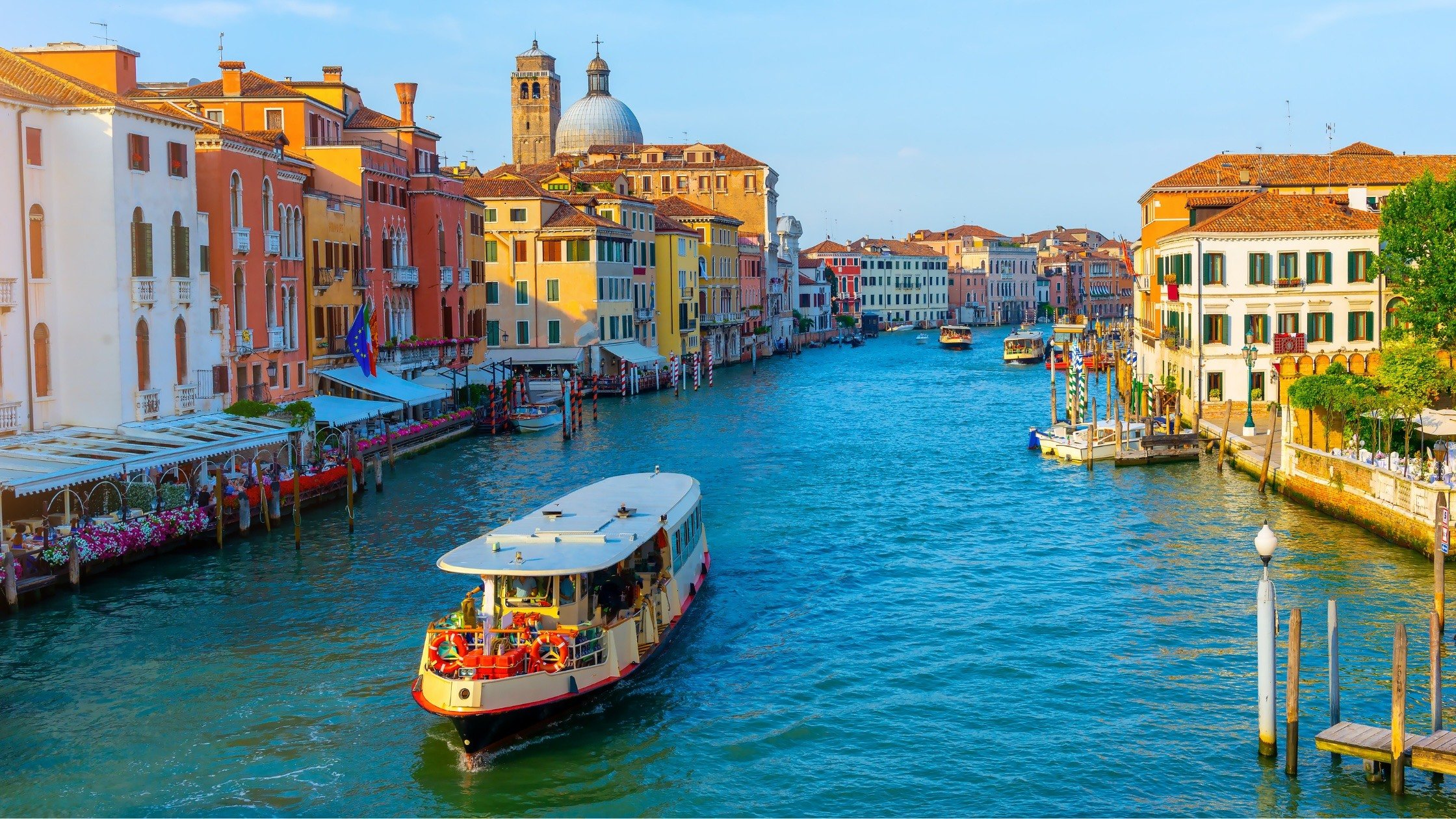When I tell my wife that I am taking her somewhere in my Italian homeland, she knows my (secondary) intent is to improve or create an itinerary. That’s just the way it is. But she does not complain because we spend our time in Italy exploring beautiful places. This time was the Portofino promontory for a hiking trip.
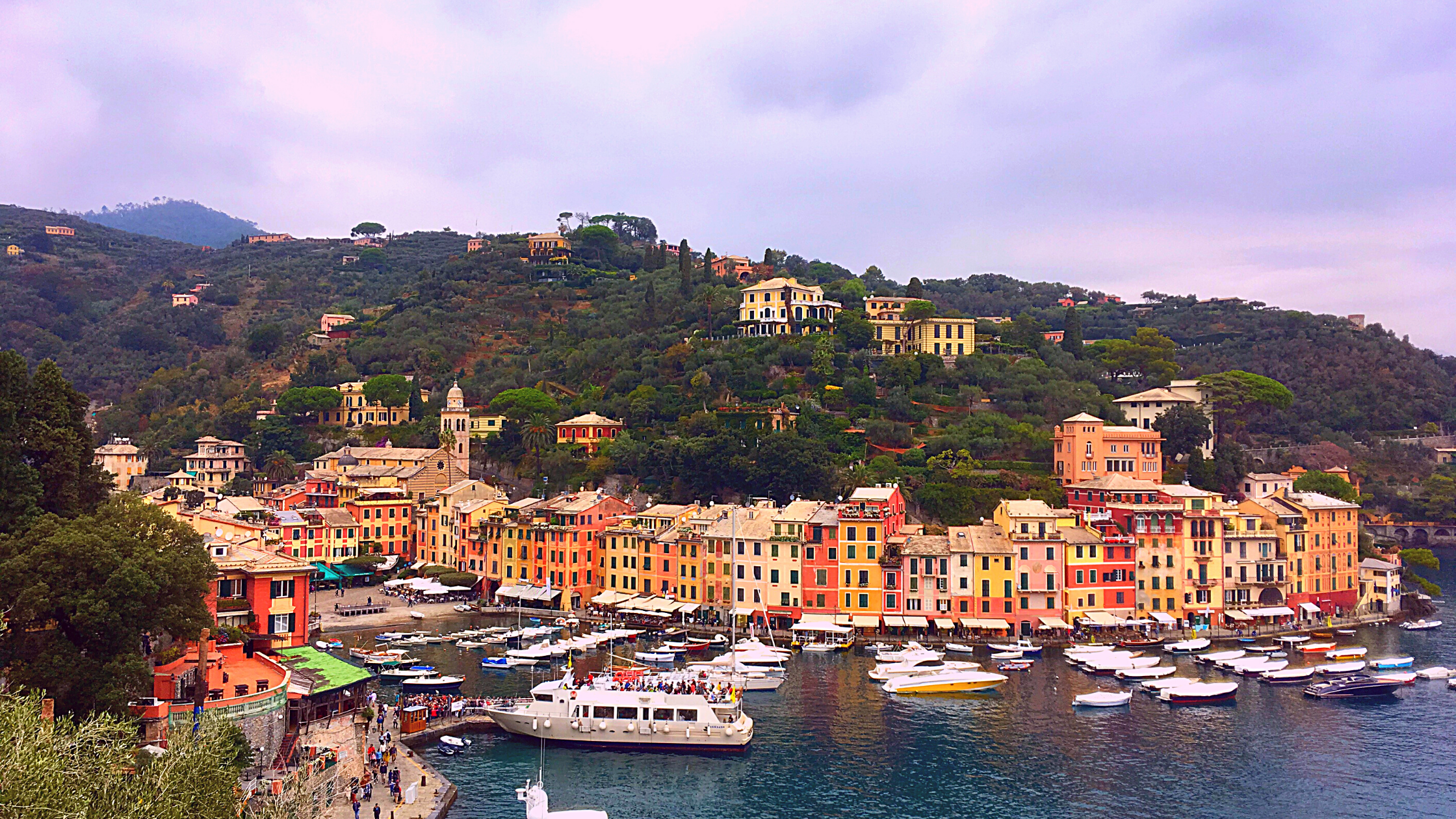
The Portofino promontory sits over a peninsula with its towns of Camogli, Rapallo, Santa Margherita, and Portofino. The long arched line of the Ligurian coast running down from Genoa is interrupted by a square promontory, about three miles each way, with Camogli (north) and Rapallo (south) as its limits. It is perfect for short hiking tours.
This corner of northern Italy is easily accessible by train, offers good hiking trails, and excellent people-watching in places such as the piazzetta in Portofino. Among hiking tours in Italy, this one is now one of my favorites.
We took a couple of days in the first week of January to verify the state of the trails for the upcoming tour season. Our Cinque Terre Hiking Program actually starts here. The trails of the Cinque Terre are an hour south.
The Regional Park
The peninsula is part of the Portofino Regional Park. There are plenty of scattered settlement among the hills, wherever the gradient of the slopes permits. Villas and small farms appear among olive terraces and citrus groves, churches and sanctuaries. However, the area has not been overbuilt like other Ligurian coastal settlements.
The four villages vary markedly in character. We agreed that our favorite is Camogli. If there is a dominating theme in the architecture (and this includes even the more remote villas and churches) it's the colorful trompe-l'oeil painting of exteriors. Some depict window openings to give a façade a more balanced aspect.
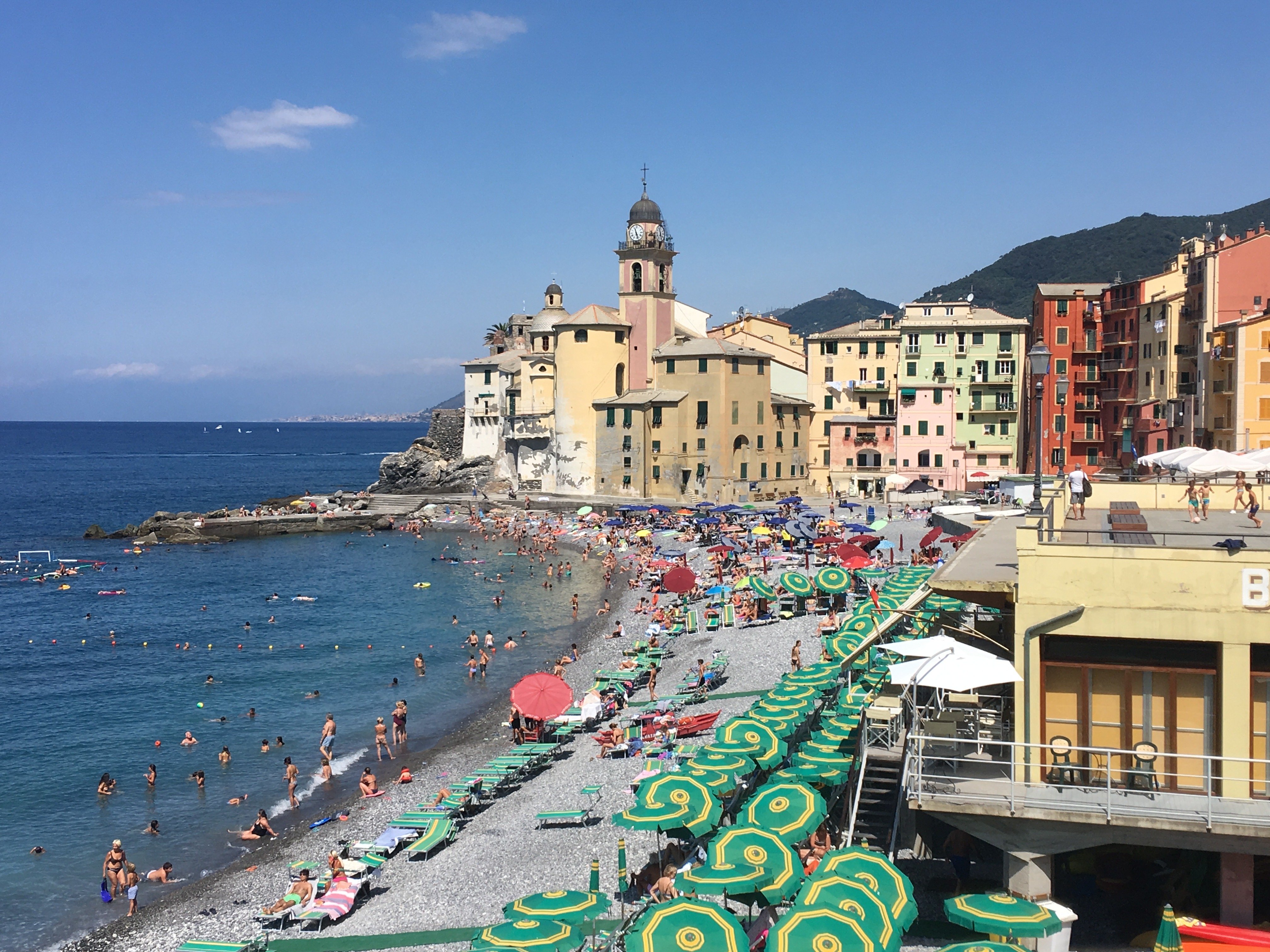
Camogli in the Summer
Another feature, more sporadic but a good deal older, are the tower-houses. In the days when the Genovese coasts were threatened by Turks, corsairs, Venetians and other enemies, thick square towers were built either by the shore or with a more distant view of the sea. Many of these survive, several centuries old but turned (usually) into rather fine homes. They aren't always obvious, because they may now be part of a larger building - sometimes a villa with trompe-l'oeil decoration!
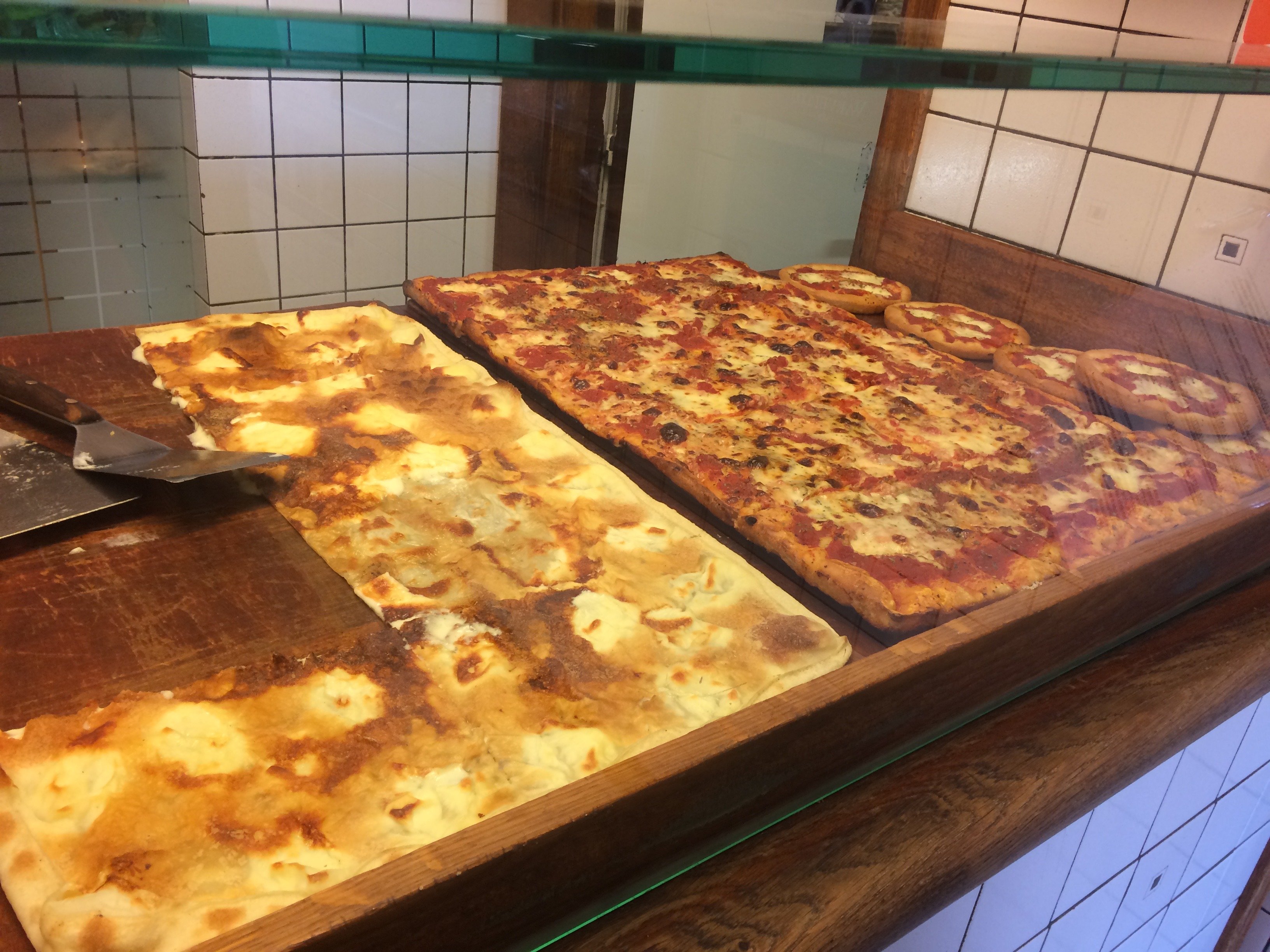
Focaccia di Recco, a Specialty of Camogli
The dominant rock of the headland is a hard conglomerate, in which large pebbles and stones have been compressed together through the effects of time and pressure. This forms craggy ground where it is most exposed to the baking sun and salt winds, but elsewhere tends to break down into a dark soil. The natural vegetation on higher ground is holm oak, a low evergreen species, along with some Mediterranean pine, but this is replaced by deciduous oak and sweet chestnut in the cooler and damper conditions of the summits and northern slopes.
The promontory is rich in wildlife, including boar and both migrant and resident bird species - with peregrine falcons along the cliffs. There is also a marine reserve, to protect fish, cetaceans and sea-bed flora and fauna. In contrast, sandy beaches are scarce. This coastline is generally better for the scuba diver than the sunbather.
You can visit the official Park website. There are good descriptions and trail maps.
The trail we followed is a nice introduction to the local trails; it's easy to navigate, and provides cultural immersion into in the history and traditions of the fishing villages. The route starts in pretty Camogli, climbs up to the Sanctuary of San Rocco, and descends to the monastery of San Fruttuoso. From there, one can take a boat back to Camogli, or to Portofino and then Santa Margherita, or continue on foot, taking the trail to Portofino (about 2 additional hours).
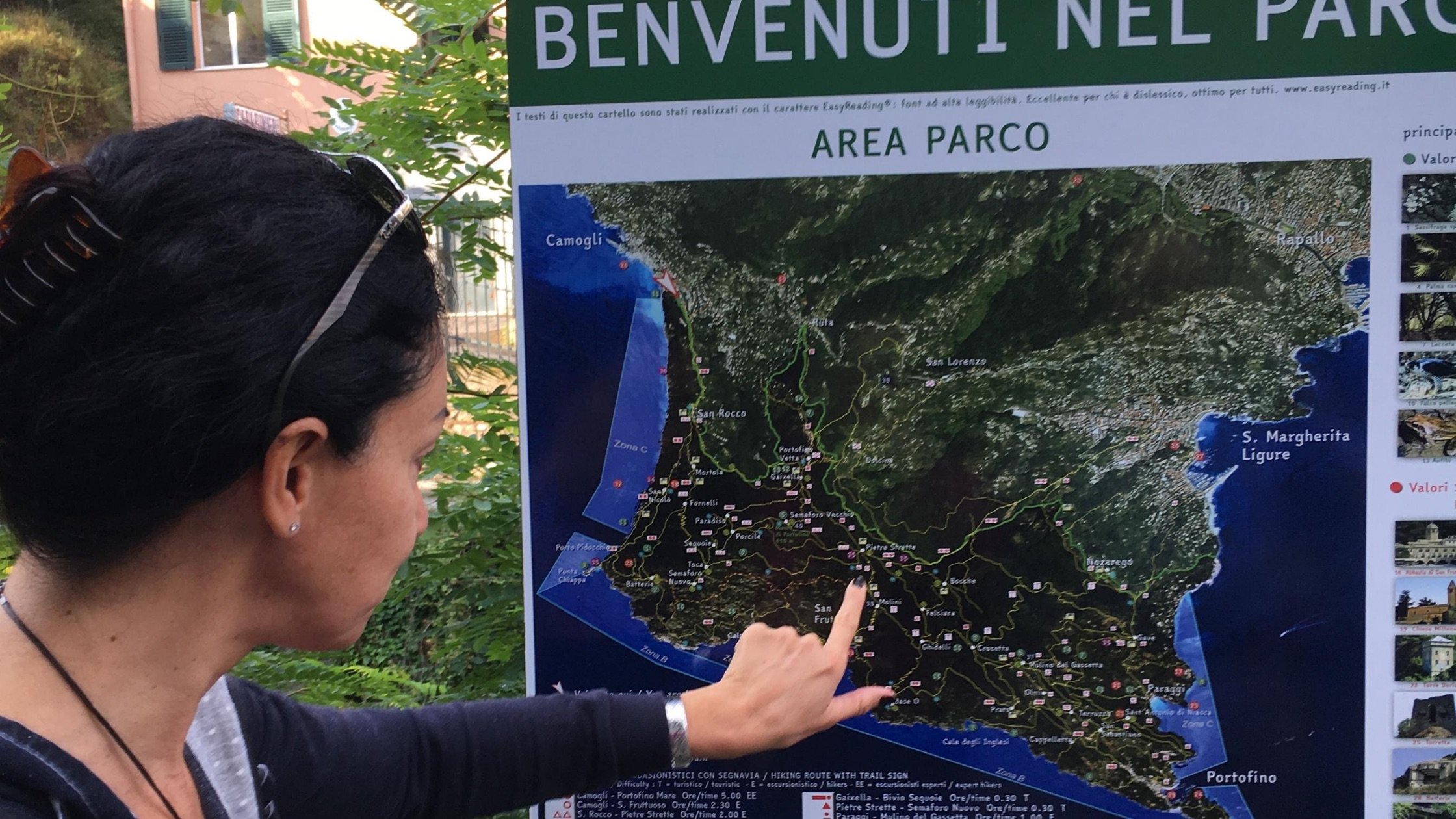
The hike from Camogli to San Fruttuoso takes from 2 1/2 to 3 hours with rest stops and plenty of time to admire the scenery. The numbers on my Garmin GPS showed 3.36 mls (or 5.4 km), and 1,500 feet (460 mt) up and then down. It was of moderate difficulty. You are going over a small mountain - walking on uneven terrain much of the time. Be prepared, be prudent, and take your time.
We followed the two dots trail signage. The beginnings of the walks, starting in the towns, aren't always clear, but once on the way you should have no problems. There are painted way marks, coded according to the route, and signposts at junctions. Hiking in Italy for dummies!
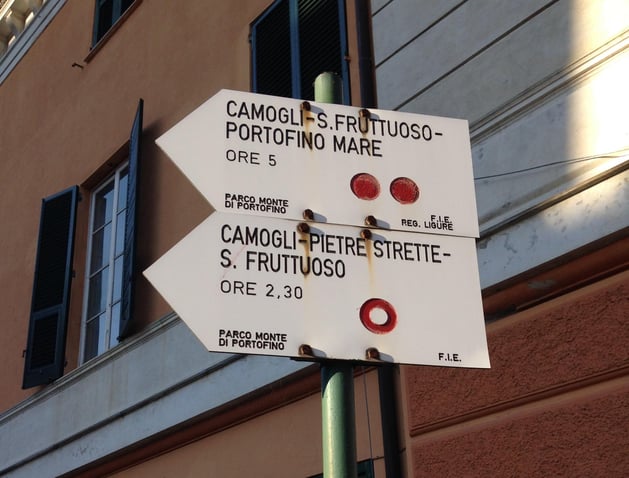
The Mediterranean scrub is a constant and pleasant trail feature. Depending on the season, colors and scents will change slightly. We found a few bushes of Mirto (Black Myrtle) and Corbezzolo (Killarney Strawberry Tree), both edible. Well, mirto is also drinkable! But I don’t know of any producers locally; perhaps there are not enough berries unlike in Sardinia.
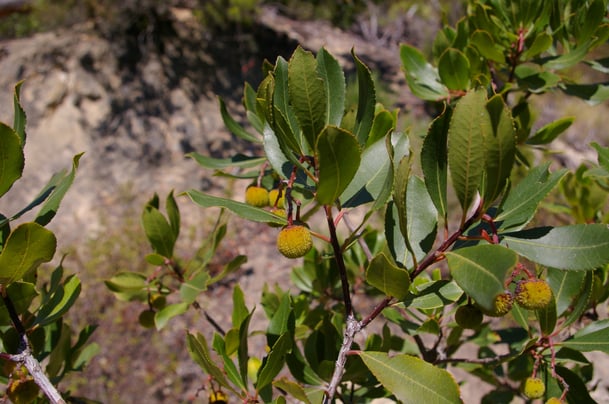
In Santa Margherita Ligure, we shared thoughts about the hike over an aperitivo. Are the views better the other way? Is it better to start or to end in Camogli? Is that other trail more forgiving on knees? What is the tradeoff? We had shifted into R&D mode: we were thinking of our groups, of the best possible options.
Before the beginning of the season, I will go back one more time because I have one last option in mind that keeps me wondering.
A few words about San Fruttuoso
San Fruttuoso is one of those gems that we Italians tend to take for granted. San Fruttuoso is not much more than an indentation along a mountainous coastline, accessible only from the sea or on foot. But it has a powerful attraction: the Benedictine monastery (San Fruttuoso Abbey). The monastery is a stunning stone building with a small dome, which straddles the beach. Parts are medieval, some Romanesque, and the burial vaults of the aristocratic Doria family of Genoa are here. Until nature decided to throw up a beach in quite recent times, boats moored directly under the supporting arches of the monastery and could unload directly into the cellars. You can still walk beneath these arches and find the odd boat or two resting on the stones out of the weather. The surroundings of San Fruttuoso are worth exploring. The main monastery building and the sixteenth-century watch tower a short walk away have been donated by the Doria family to FAI (Fondo Ambiente Italiano).
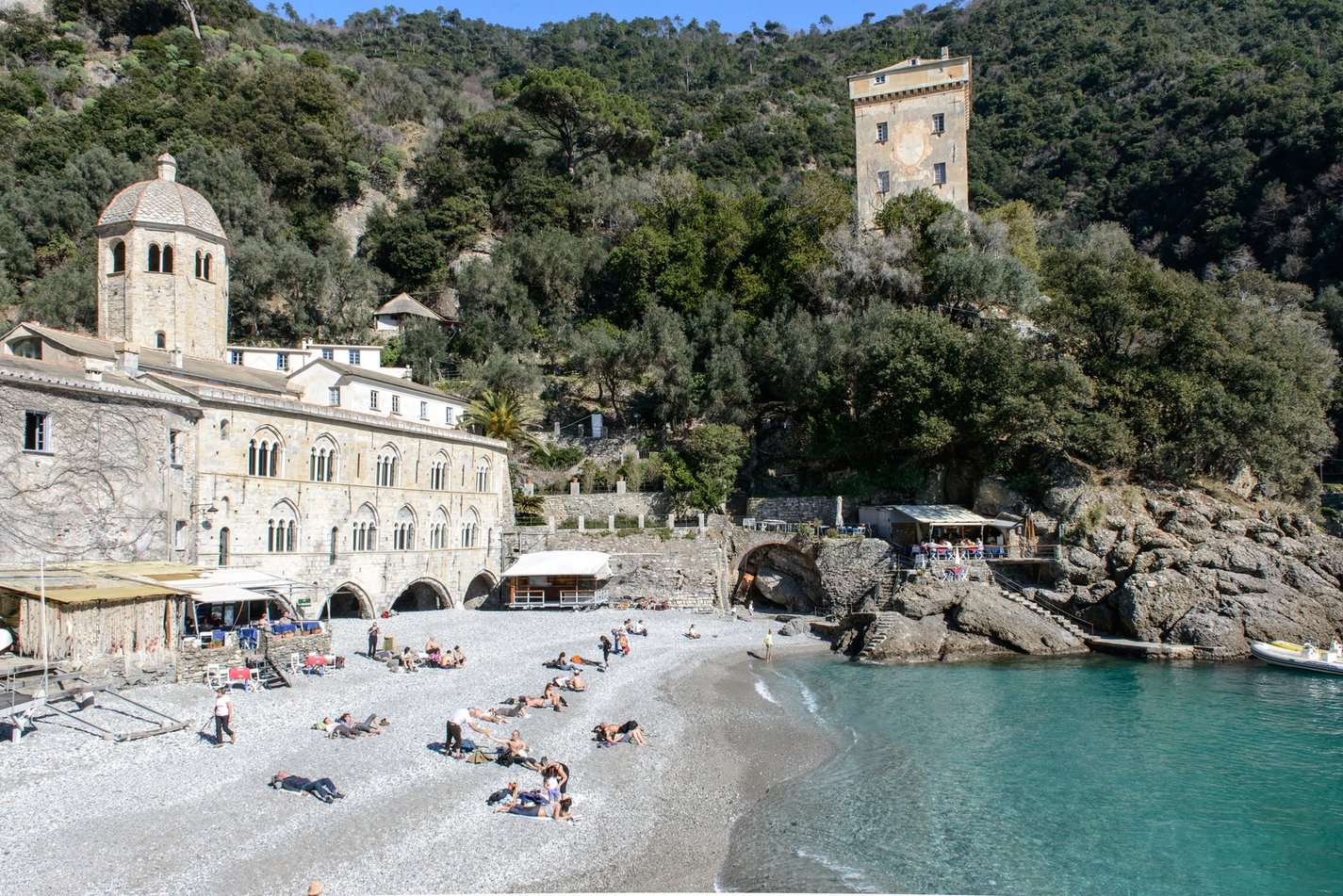
San Fruttuoso


